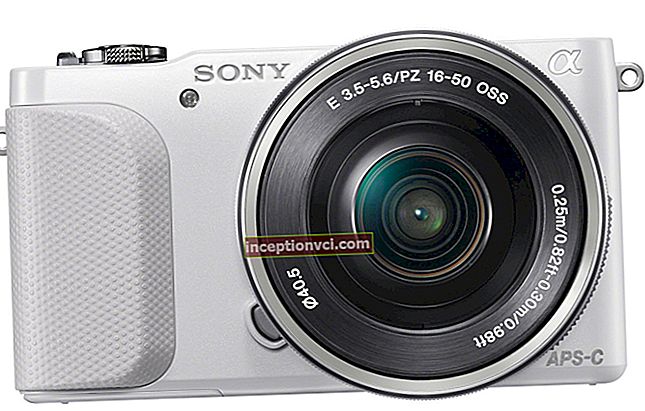The shampoo is believed to be lather. And he must also cleanse the hair, moisturize, restore ... In general, he "owes" a lot of things, but few people know that with frequent shampooing, shampoo dries out the skin and even causes a microburn. That's it.
None of the chemicals in the product are harmless. Think of it as "2x2" and read the ingredients list before choosing a shampoo for your hair.
The approximate composition of a regular shampoo.

9 hair supplements with life-giving power.
- Water (Aqua) - how can it be without it.
- Surfactants (surfactants)
- Removes grease and dirt from hair. These same surfactants, the so-called sulfates, are quite aggressive, but they foam well, therefore they are present in most shampoos:
- lauryl ammonium sulfate (ALS) or sodium (SLS);
- laureth sulfate (ALES, SLES), and the sparing action of TEM lauryl sulfate.
- Medium foaming detergents - for soap suds (cocamidopropyl betaine, glyceret cocoate). Natural ones do not foam much.
- Sodium Citrate - is responsible for the pH (acid-base value) of the shampoo.
- Wax (Glycol Distearate) - for pearlescent appearance and fluidity of the product (questionable additive).
- Preservatives (parabens, sodium benzoate). The longer the shelf life of the product, the more preservatives it contains.
- Panthenol (provitamin B5) - moisturizes, adds shine.
- Care additives (keratin, protein, vitamins A, B3, B6, PP, base and essential oils).
- Perfumed composition, better natural essential oils, herbal extracts.
5 harmful additives found in shampoos
- Propylene glycol (E1520): provokes an allergic reaction, especially in people prone to dermatitis.
- Mineral oils (especially heavy oils): form a film that traps toxins. Oils prevent oxygen from entering, which slows down blood circulation.
- Formaldehyde (as a preservative and antiseptic): maximum concentration 0.2%. May cause irritation of the skin, mucous membranes of the eyes, nasopharynx.
- Lauryl Ammonium Sulfate (ALS), Sodium Lauryl Sulfate (SLS) are the most aggressive surfactants. They dry out the scalp, cause irritation, itching, especially on a poorly washed head.
- Antibiotics and antifungal drugs (best avoided in the composition). For treatment, use a special shampoo, after consulting a doctor.
How to choose a shampoo: by hair type
To choose a good shampoo, look not at the brand, but at the pH value.
- For normal hair, choose a shampoo with a neutral acid-base ratio of 5.0-5.5.
- For fat people - with an index of at least 6.0.
- For dry hair, you need a shampoo with a ph level of 4.7-5.0.

Often manufacturers do not indicate the pH level on the shampoo packaging. They provide a guideline for hair type. Therefore, it is important to know:
- shampoo for oily hair has the highest acidity;
- for dry, weakened, damaged and stained - the lowest;
- and for normal, gray-haired and curly - medium.
Hair type is not constant. It changes throughout life depending on the work of the sebaceous glands. And those are at the mercy of hormonal levels, dietary habits and the health of the gastrointestinal tract.
What is the difference between men's shampoo and women's
Only by the smell. See the table on how to choose the right shampoo.
| Hair type | External signs | What should be in the shampoo |
| Dry (not contaminated 5-7 days) |
|
|
| Fatty (salted in 1-2 days) |
|
|
| Normal (get dirty in 2-3 days) |
|
|
| Combined |
|
|
See life hack how to make bubble bath yourself
How to choose a sulfate-free shampoo
Sulfate-free shampoo is the safest, it consists of natural extracts and components. The composition of the product contains the mildest surfactants of plant origin, such as:
- Sucrose laurate (sucrose laurate),
- Decyl glucoside (based on coconut fatty acids and corn starch), Сocamidopropyl betaine (mild surfactant),
- Surfactant Magnesium Laureth Sulfate
With regular shampooing, this shampoo returns shine, smoothness and silkiness to the hair. The structure of the bulbs becomes denser, growth is accelerated, and the hair on the head becomes more voluminous.

| "Pros" of sulfate-free shampoos | "Cons" of sulfate-free shampoos |
|
|
Which shampoo is better: myths when choosing
We hear these speculations everywhere. And we even believe some of them. But it is not for nothing that they say: “Trust, but verify!”, So as not to be made fools. Debunking myths. Ready?
Myth 1: 2 in 1 shampoo is better and cheaper
More affordable - yes, we don’t argue. But the concept of "better" is very controversial. Shampoo, like a magnet, attracts dirt and sebum from the hair. The balm, on the other hand, is attracted to the hair and creates protection and nourishment for it. Being in one bottle, these compositions neutralize each other, as a result - the shampoo cleans worse, the balm protects doubtfully.
Myth 2: hair loss shampoo heals
Hair loss is associated with internal problems of the body (diseases of the gastrointestinal tract and the endocrine system, hormonal disruptions, problems with blood vessels and the spine). The root cause must be treated. Shampoo is not a medicine, it is used as an element of a medical complex.
Myth 3: a lot of foam is a good shampoo.
Aggressive and concentrated surfactants foam, and this is not good for our hair. Therefore, consider this point when choosing a quality shampoo.
- Therapeutic foam slightly - it contains no more than 10% surfactant.
- In the nursery - no more than 15%;
- In the usual, no more than 25% of surfactants.
Myth 4: horse shampoo is good for volume.
Zoo shampoos are very concentrated. The pH of such products is about 7, and for people the norm is 5.5. Washing with pet care products, even diluted 1:10, can lead to allergies, dandruff and dry skin. Another question: use a shampoo that contains horse keratin, a protein derived from horse fat. He works wonders.
Tips: Hair Care Complete Guide. Part 1: washing "
Watch the video how to make an installation for soap foam at home









